Shopify is a powerful tool that has launched and hosted over 2 million businesses like yours. With that power comes updates, shortcuts, and hacks to make your day-to-day even more efficient. But how well do you keep up with all that Shopify has to offer your business? Here, we’ll explore the top hacks you might […]
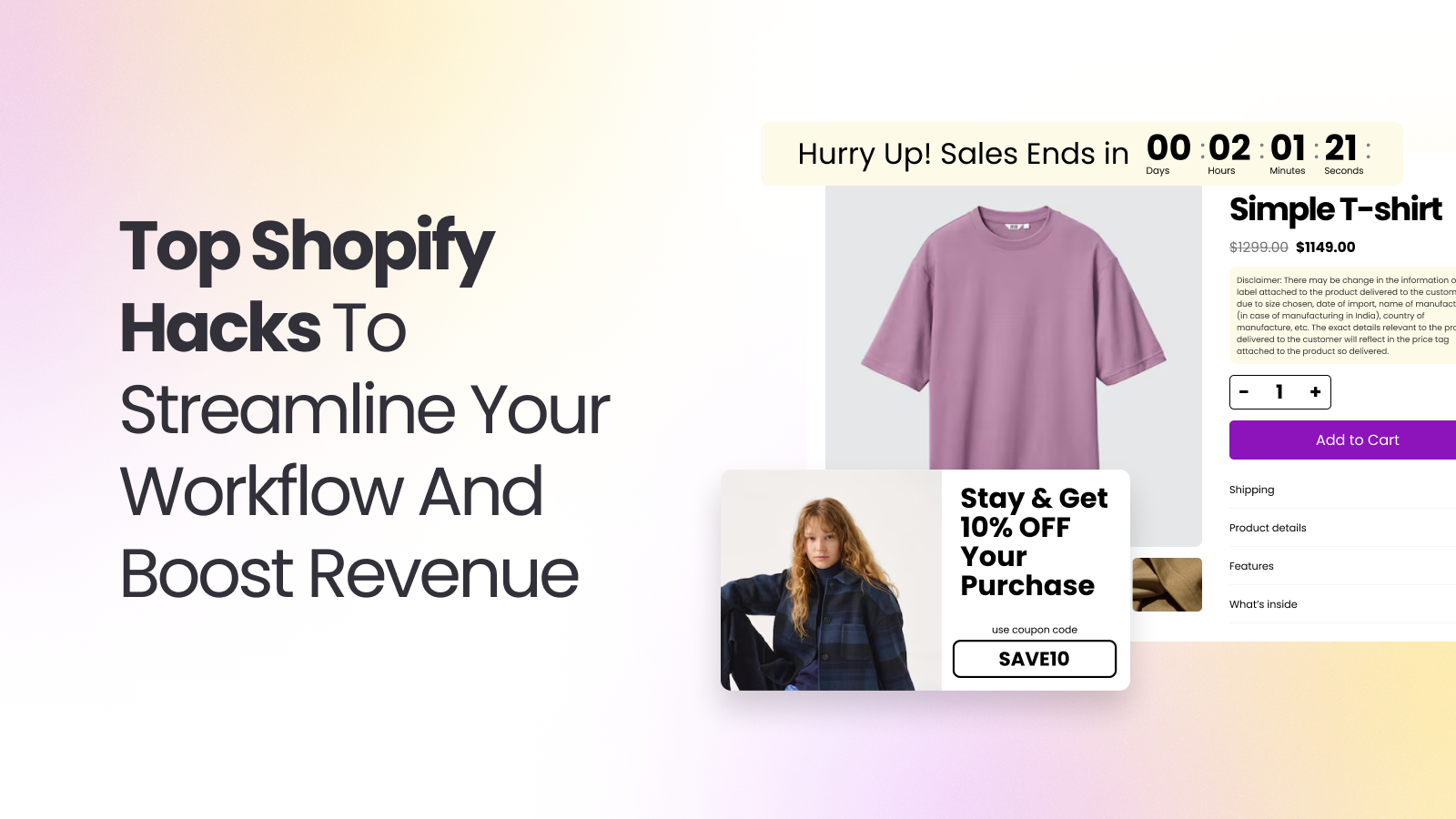
Shopify is a powerful tool that has launched and hosted over 2 million businesses like yours. With that power comes updates, shortcuts, and hacks to make your day-to-day even more efficient. But how well do you keep up with all that Shopify has to offer your business? Here, we’ll explore the top hacks you might not be taking advantage of, from simple conveniences to passive revenue generators.
When potential customers first land on your home page, are they greeted with a popup? Typically, stores use a welcome popup with a discount offer to get consumers to buy within the first few minutes. This is a great way to shorten the pipeline between interest and purchase.
Aside from the welcome popup, you can also try:
In this example from the Upsell & Cross Sell Pop Up Store, you can see the user viewing a t-shirt, but a cross-sell popup is coming in on the bottom left, prompting the user to add a hat. You could set this cross-sell popup to include any of your store’s products or services for additional purchase.
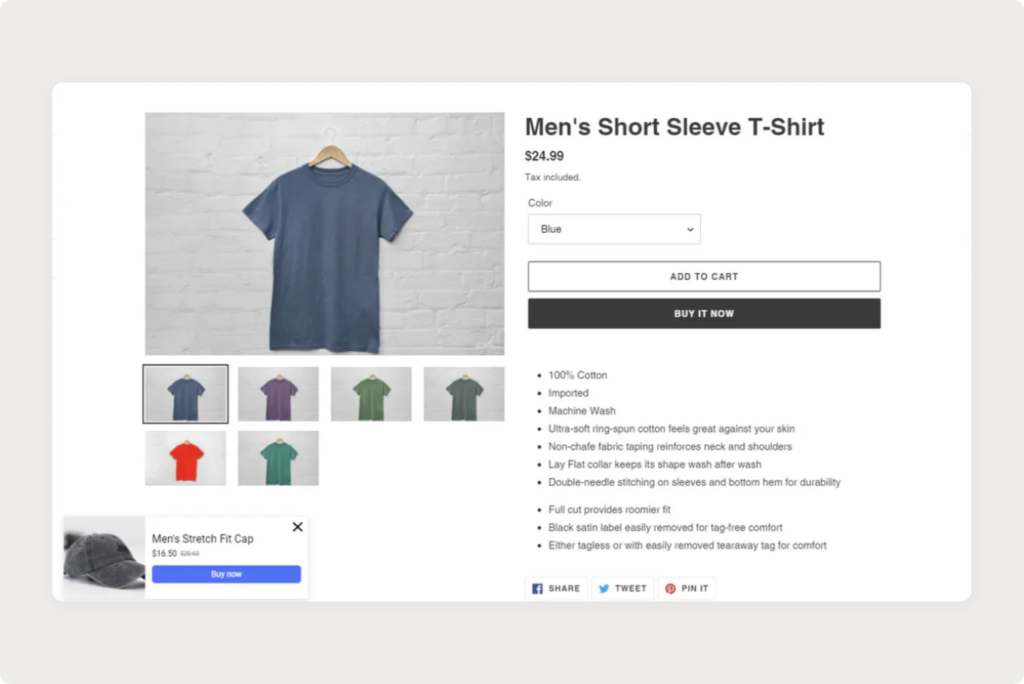
StoreYa makes a great exit intent popup, prompting users to stay by offering a discount. You can also customize the offer to reflect anything that may fit your audience.
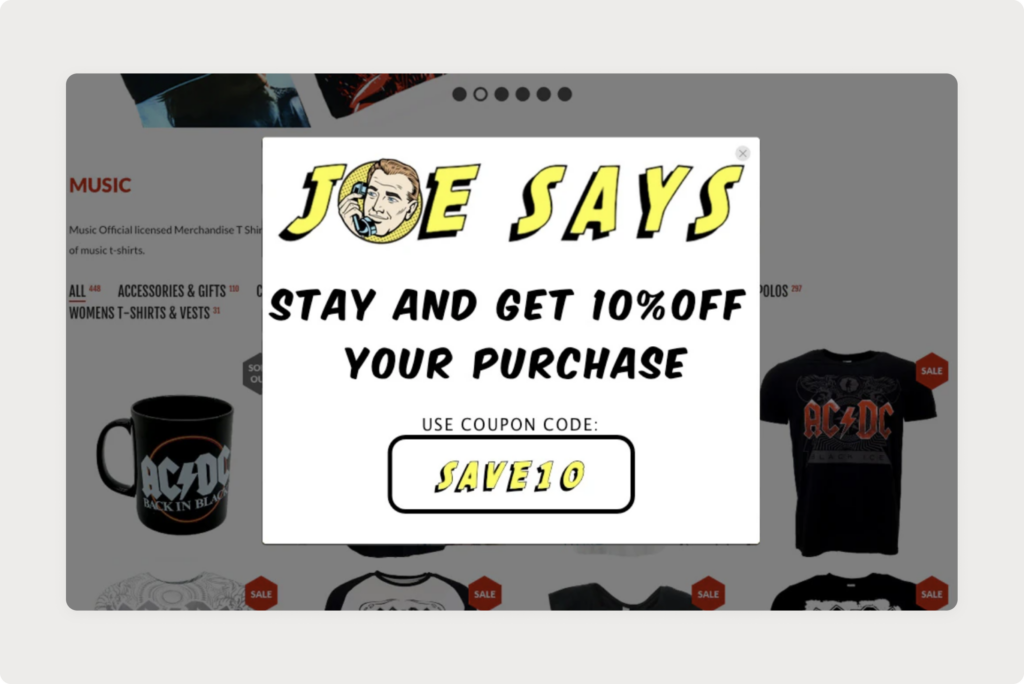
The aim is always to have customers in your store as long as possible, and a popup (or three!) is a great way to offer deals, entice them to browse, and ultimately build loyalty.
From an SEO perspective, the more landing pages, the merrier. The concept of a landing page, though, is something many business owners don’t quite understand. Their main purpose is to make you rank higher on Google, and get your site visitors to perform an action.
That action converts any visitor into a lead, whether it be subscribing to a blog, signing up for an email list, or test-driving a free trial. Leads then have the chance to convert into customers, which means more revenue from you. When building out your landing pages, think of pages for each feature, customer profile, and industry you serve, and pepper in the right keywords from there.
Shopify uses the template language “Liquid.” This language lets merchants insert information dynamically and build new templates for hosting static content. For example, you may want to create a product template to host the product’s image, title, price, and other attributes. These attributes are then dynamically rendered based on the product currently in view.
Editing this theme code lets you make more detailed changes to the look of your store, including customizing appearance and content.
Creating a sense of urgency in customers is a great way to boost conversion rates and drive sales. In e-commerce, urgency means making customers feel like they’ll miss out on incredible savings if they don’t act immediately. This could look like:
Essential Apps can add a sale countdown timer to your store. It’s customizable to fit your theme and can be used as a banner, in-cart timer, or both!
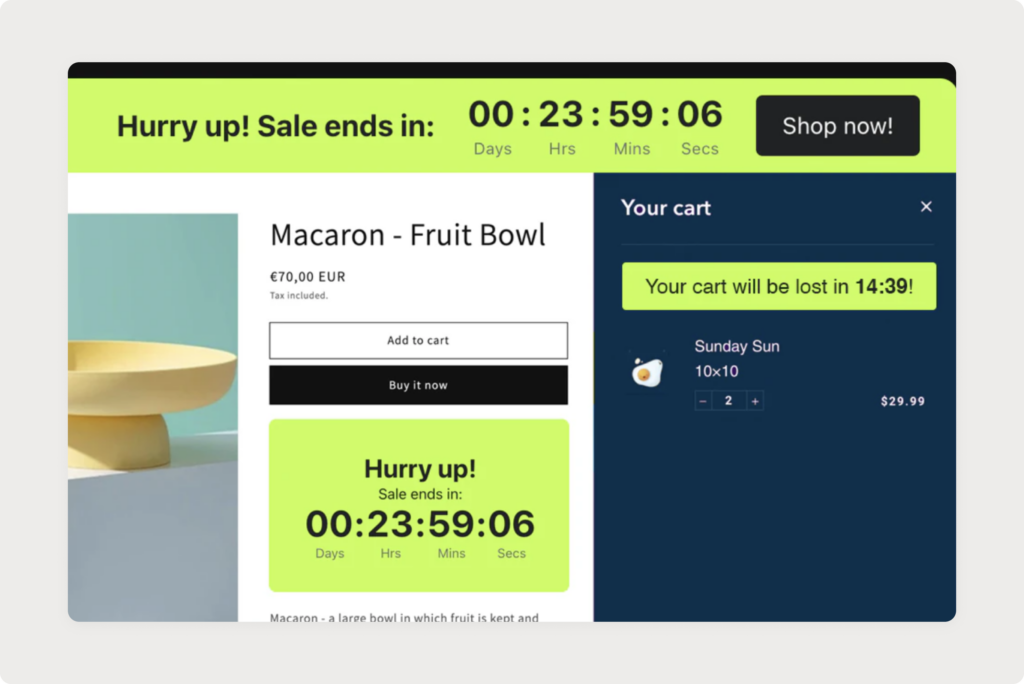
Ubiq produces an app that counts your inventory and displays when low quantities are available. It’s compatible with Shopidy 1.0 and 2.0 themes and is fully customizable.
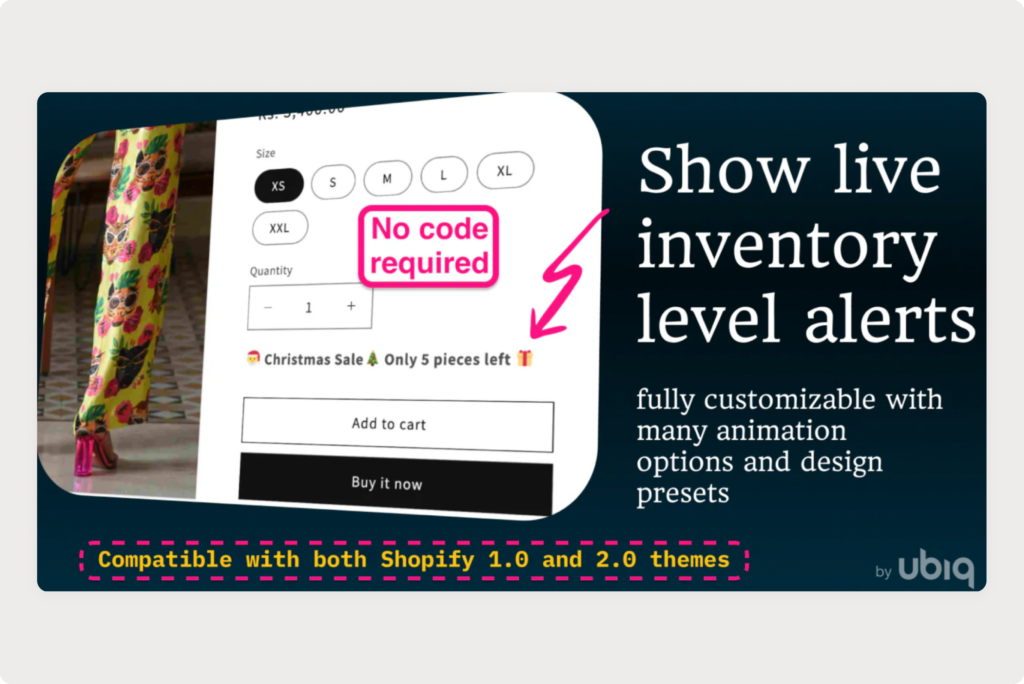
Affiliate marketing is a great way to earn passive income and build brand awareness while partnering with influencers who do some of the selling for you. It’s low-cost and flexible, and you can scale your affiliate programs when you’re ready. You’re in the driver’s seat, and you can determine who to work with, when, and how.
If you haven’t yet started with affiliate marketing, or you’re looking to simplify your current program, try Simple Affiliate. Simple Affiliate is a powerful but user-friendly tool for Shopify merchants to quickly launch, manage, and grow their affiliate programs.
Trusted as a Shopify partner, Simple Affiliate is the only affiliate marketing software that handles tax forms like 1099’s and automated payouts. It’s affiliate partnering, made powerful and simple.
Shopify has a massive content archive for its users and merchants, which is a great source for Shopify hacks. But, sifting through the content library can be time-consuming. A quick way to cut through the noise is to use the feedback forum.
By posting in the feedback forum, Shopify partners and other community members will share reviews and give feedback on your store. They will tell you what your store might be missing, how you could improve the customer experience, and advanced tips and tricks to streamline your workflow.
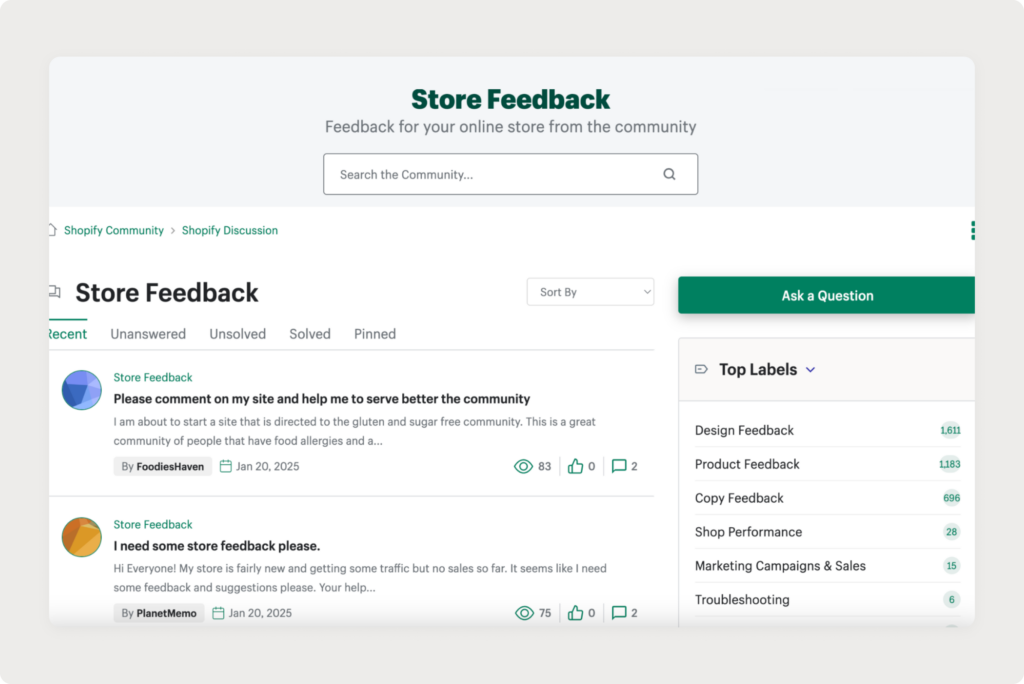
This next hack seems small, but trust us – it works. It’s simply to enable notes, meaning special checkout instructions, at the checkout page when your clients make purchases.
Even if the purchasing process is the most straightforward on the web, there will still be a few customers who need the extra support. Enabled notes solves the minor issues you don’t anticipate so that your customers can be heard and eliminates a more tedious back and forth through email.
Checkout Buddy lets merchants add a checkout note box and perform 30+ other checkout functions, such as custom shipping, gift wrapping, tiered discounts, and more.
The Google Search Console is a free platform you can use to incorporate a variety of website performance tools. Adding your sitemap to Search Console lets Google use it as a directory for locating and crawling your pages. This will help you gain more visitors and ultimately boost conversion.
If you haven’t already, you should link your social media channels to your website. Having a welcoming and consistent social media presence builds brand awareness, trust, and keeps visitors coming back.
Integrating your Instagram, YouTube, FaceBook, and TikTok are great ways to increase visibility. Maybe you have a visitor who isn’t quite ready to buy but wants to follow you on Instagram to stay updated with product releases and promotions. It’s a way to stay tight-knit with customers, prospective buyers, and affiliates. Avantify makes linking your social media easy with clean, customizable icons. Merchants can choose between 50+ social media icons with placement flexibility.
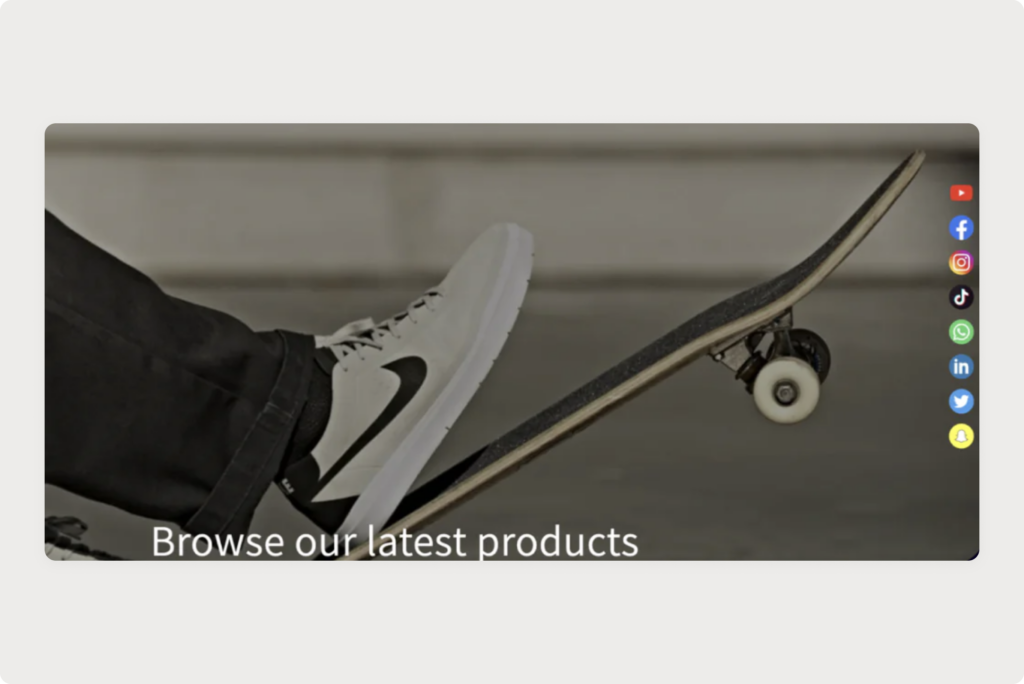
When you optimize your store images, they’re more likely to load quickly and display correctly. This leads to a cleaner and more consistent site design and delivers a better customer experience for visitors. Optimization also gives your images a better chance of appearing in search results and boosting your site traffic.
Optimization looks like image compression, refining your image metadata, adding relevant keywords to file names, and using the best image dimensions for the page. For example, try to get your logo or banner images to the correct dimensions Shopify allows before inserting.
The SEO Image Optimizer Wizard helps stores optimize their images and icons and scores them on optimization effectiveness. That way, you know exactly how well your images perform on site.